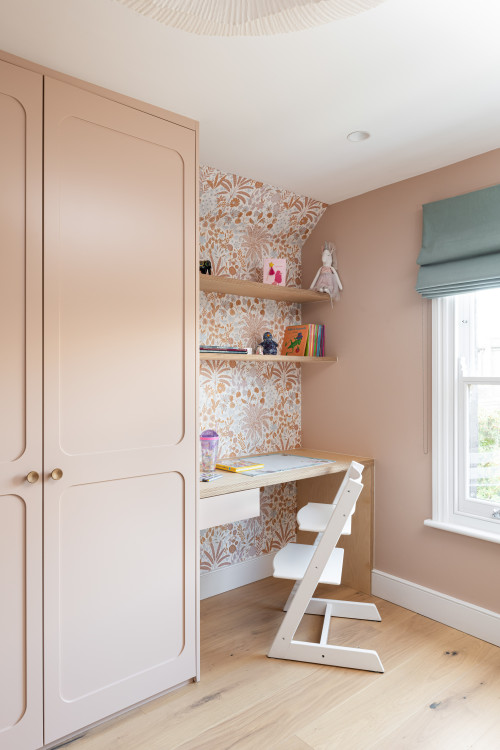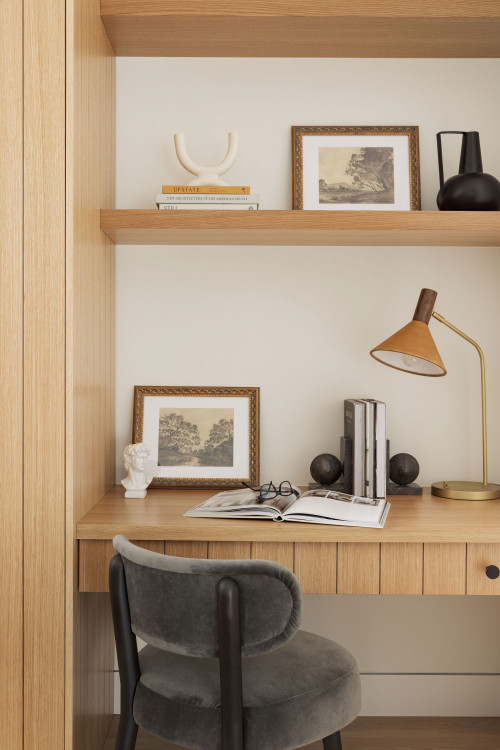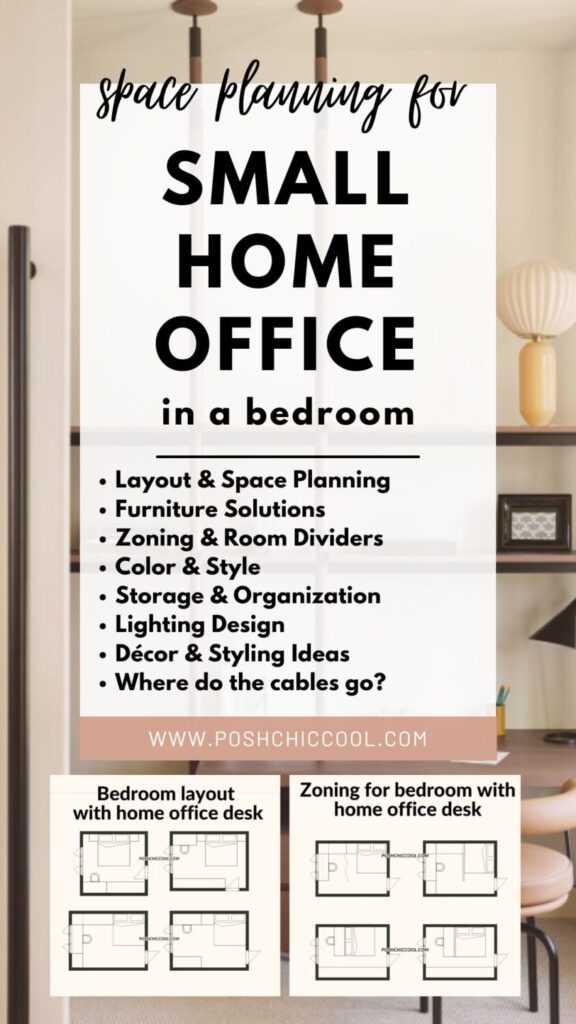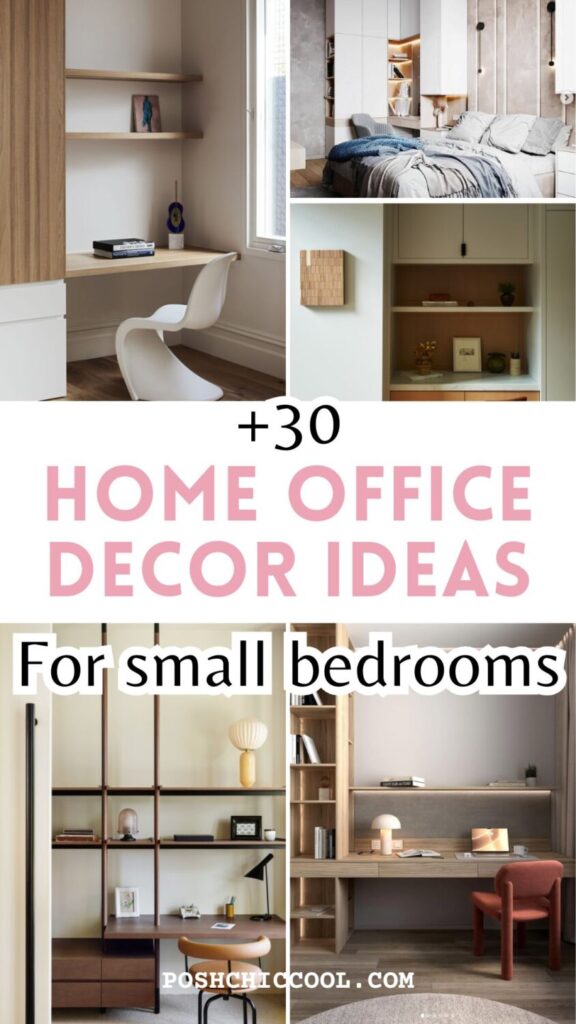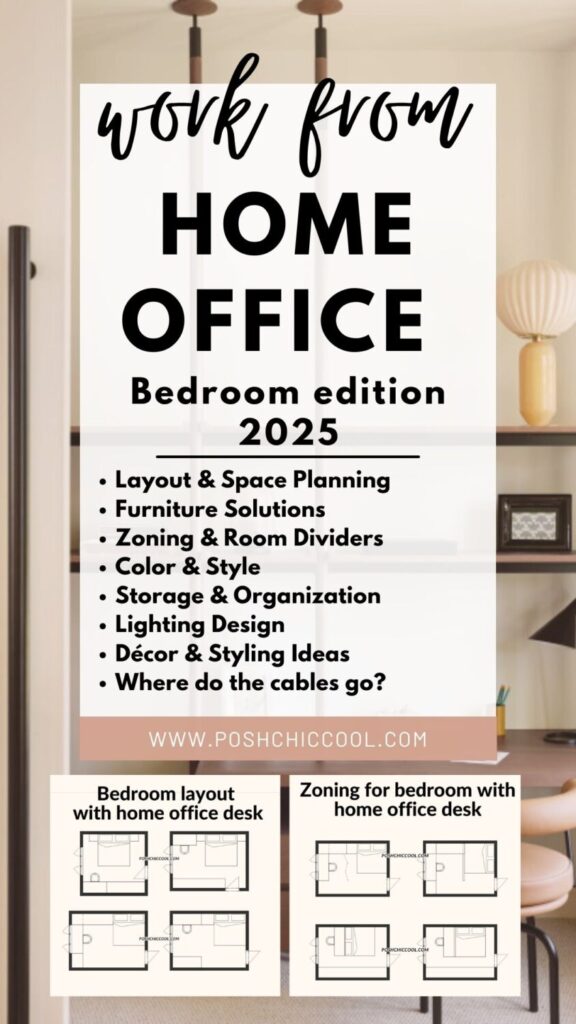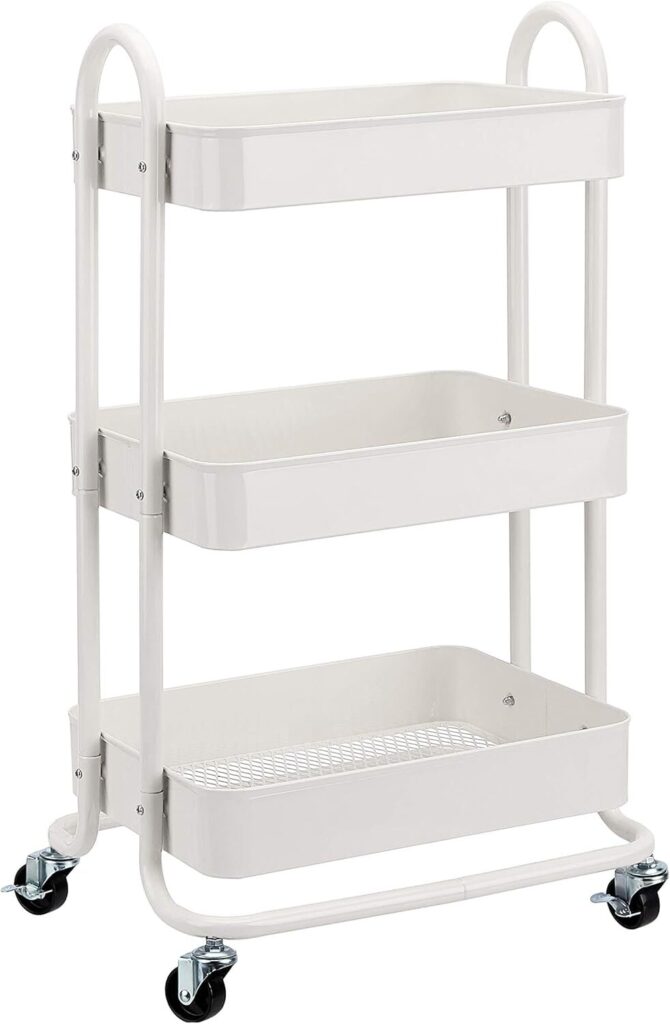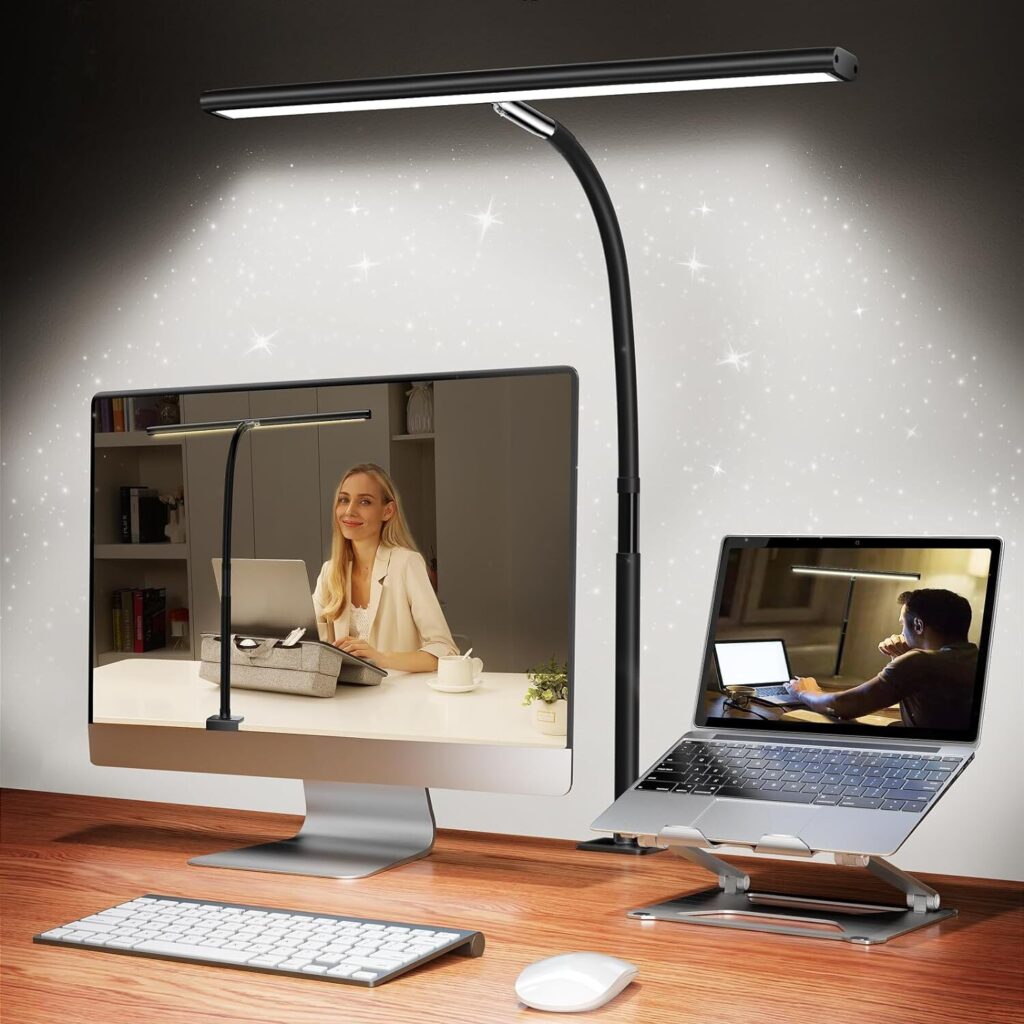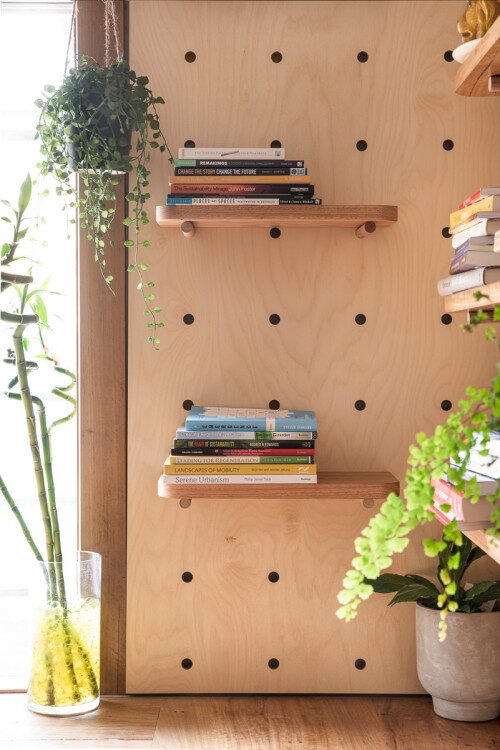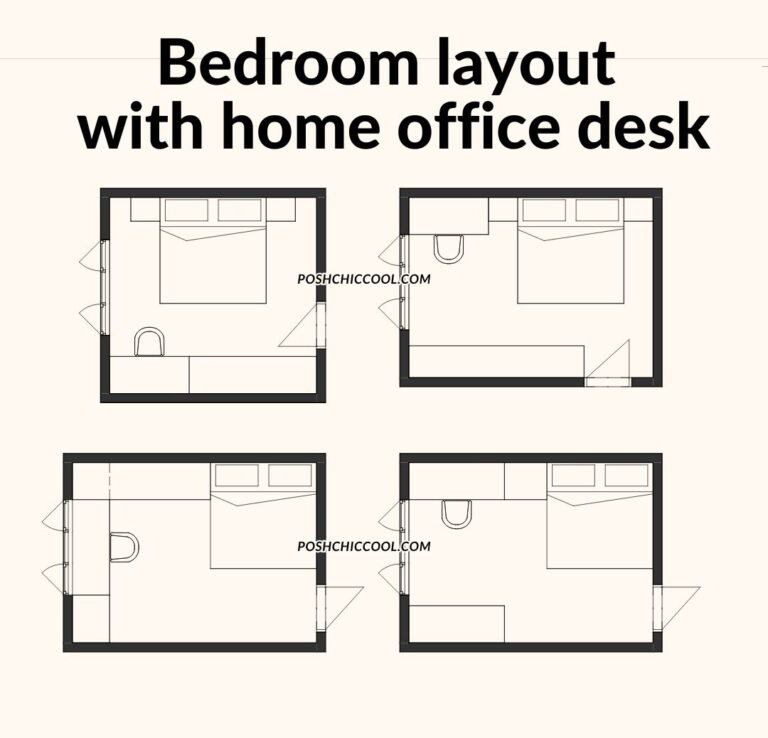While working with a client on designing a home office bedroom combo for a new apartment in Prague, we discussed the many challenges of combining function and comfort in a small space.
It sparked the idea for this post—8 things to consider before designing a home office in a bedroom.
Whether you’re planning a cozy home office, need small home office solutions, or are rethinking your home office setup, I’ve gathered practical ideas and design tips to help you make the most of your space.
Posh Chic Cool is a participant in the Amazon Services LLC Associates Program, an affiliate advertising program designed to provide a means for sites to earn advertising fees by advertising and linking to Amazon.com. As an Amazon Associate, I earn from qualifying purchases at no extra cost to you. Disclaimer, Privacy Policy and Terms and Conditions
Save this post on Pinterest so you can always find it later!
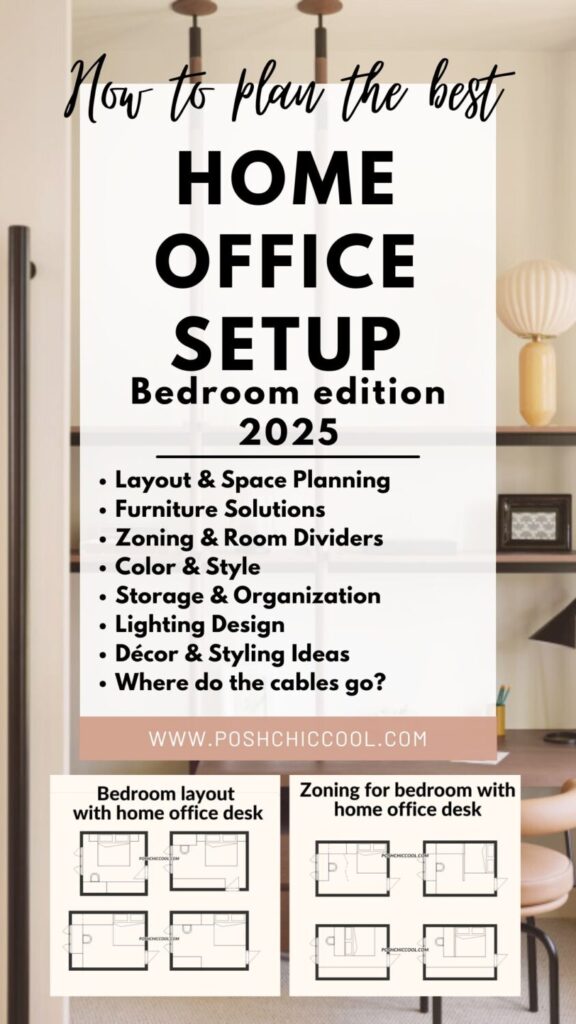
When it comes to designing a home office in a bedroom, we need to think about several layers:
#1: Layout & Space Planning
When designing a home office in a bedroom, layout and space planning are the first things to get right.
A well-thought-out home office design ensures that both sleep and work zones can coexist without feeling cramped, especially in a small home office.
Depending on the room’s shape and size, you have a few smart options:
– Float a desk under the window for natural light while leaving wall space for shelves, art or home office decor.
– Position the bed along the shortest wall to free up space for a compact workstation.
– Tuck a corner desk into an unused nook to keep the room feeling open.
– Center the bed and flank it with a narrow desk that doubles as a nightstand.
– Place a slim console table or secretary desk at the foot of the bed.
– Swap part of a built-in wardrobe for a recessed desk setup.
Here are some floor plan ideas:
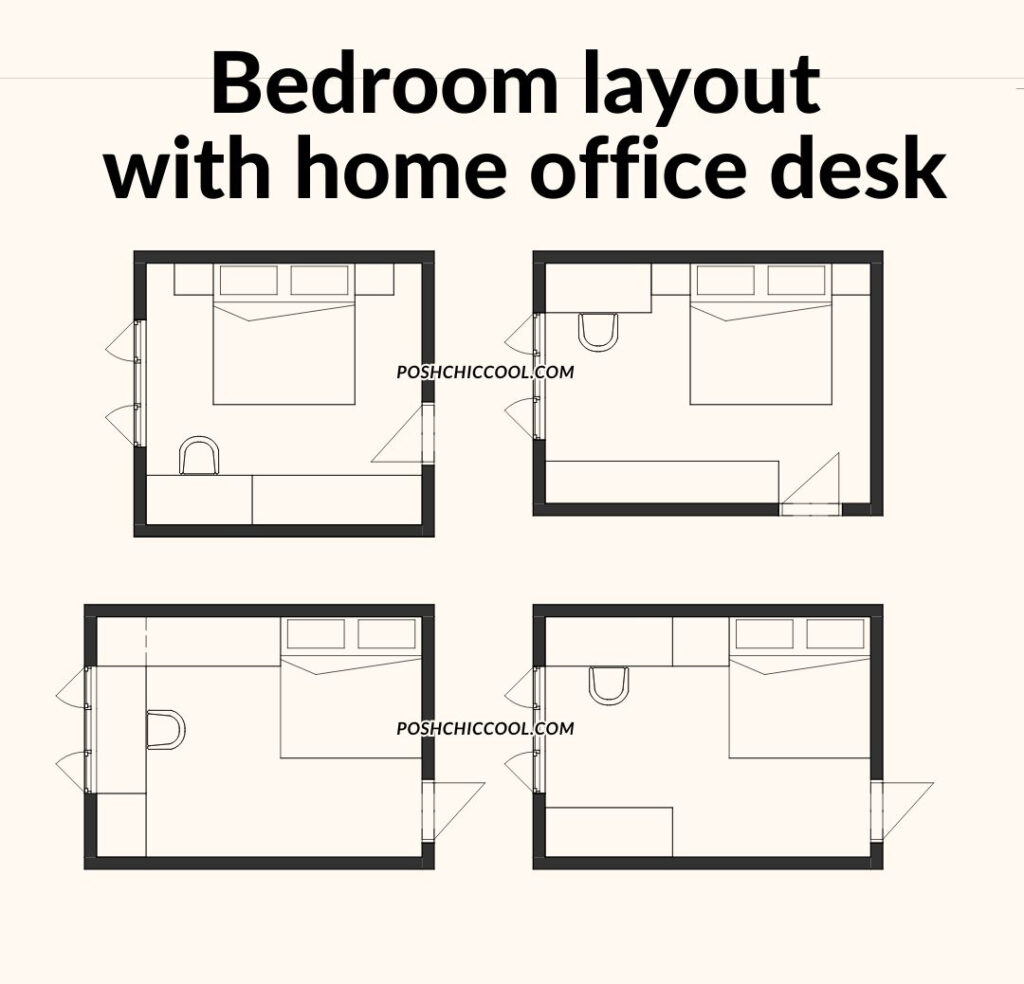
In this example, option #1 and option below it work the best, however, each of them has flaws.
The downside of the first scenario is that the desk is facing a wall, and the downside of the scenario below it is that the bed does not have nightstands.
#2: Furniture Solutions
When designing a home office in a bedroom, thinking beyond traditional layouts can help maximize functionality—especially in a small home office.
While the previous section assumed a permanent double bed, flexible furniture choices can completely transform the space into a cozy home office that still serves as a sleeping area.
Consider a Murphy bed that folds up to reveal shelving or even a fold-down desk—perfect for tight layouts.
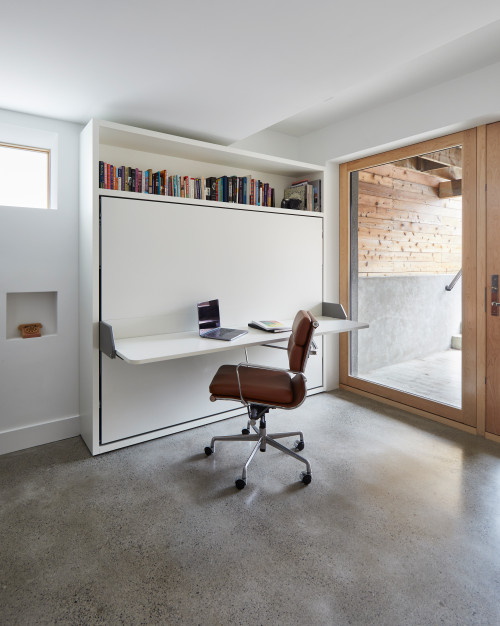
A daybed is another great choice, offering seating by day and sleeping space by night, blending seamlessly into a relaxed home office decor scheme.
For the ultimate space-saver, try a wall-mounted or drop-leaf desk that tucks away when not in use.
You could even create a cloffice-style setup by converting part of a closet into a home office setup, complete with built-in shelves and lighting.
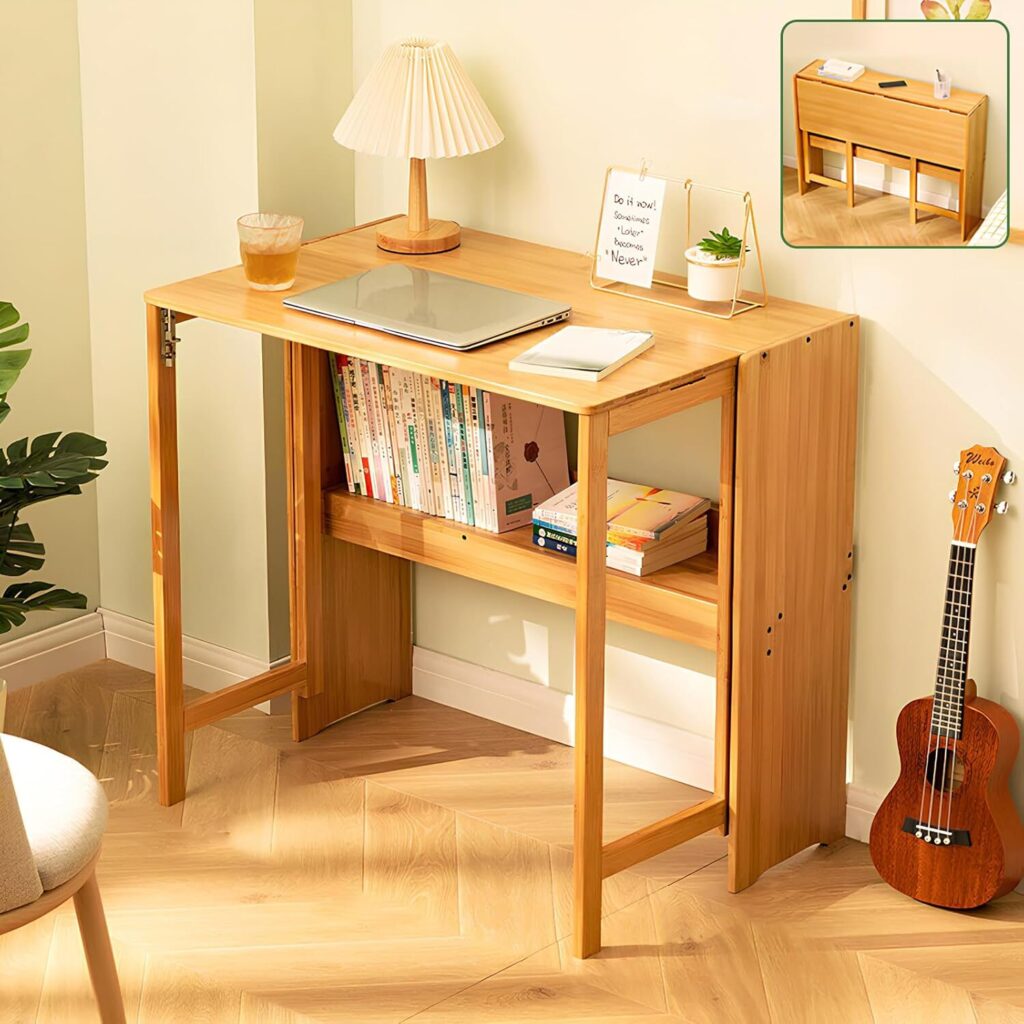

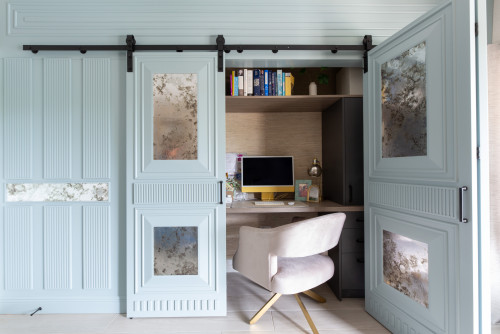
Storage beds are also smart options, eliminating the need for bulky dressers and freeing up floor space for your work from home office zone.

If your ceilings are high, a lofted bed above the workspace can work, but only if you’re comfortable with the climb. (Speaking from experience, not everyone loves that setup!)
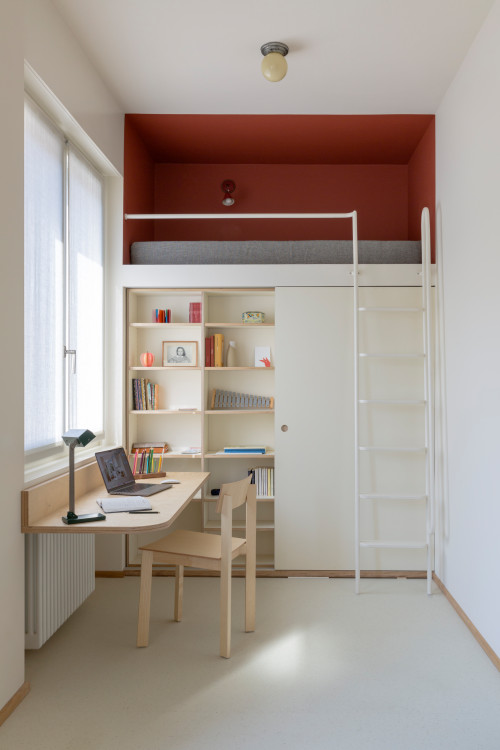
The key is choosing furniture that adapts to your lifestyle and supports your dual-purpose home office design.
#3: Zoning & Room Dividers
When designing a home office in a bedroom, creating a visual boundary between your work and rest zones is essential, especially if you’re part of the work from home office crowd who regularly hops on Zoom calls.
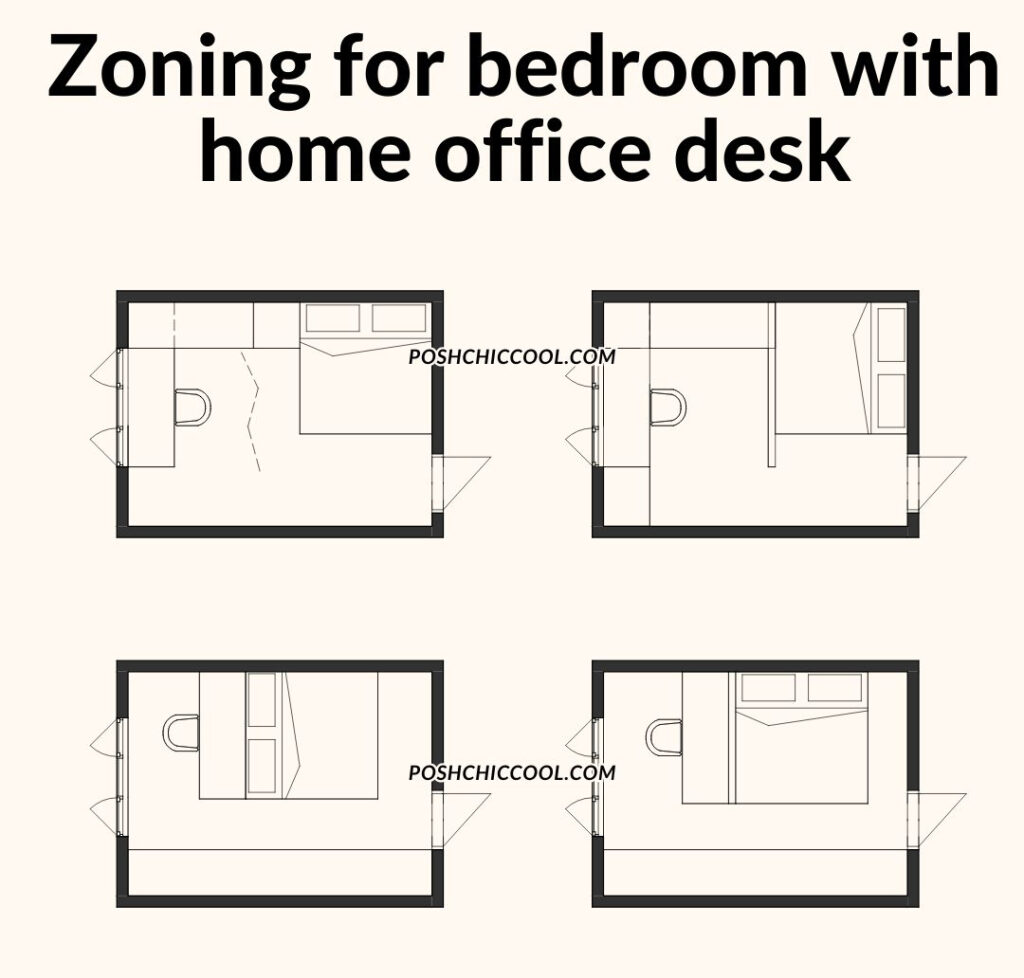
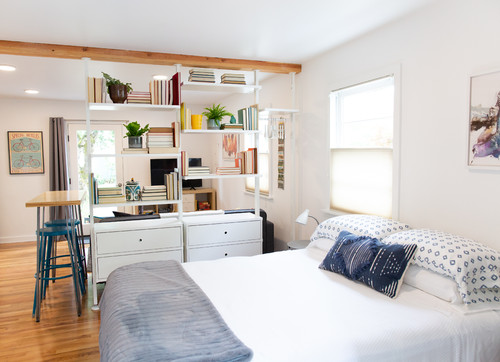
While digital backgrounds are a quick fix, they often feel inauthentic and can subtly undermine the professionalism of your home office setup.
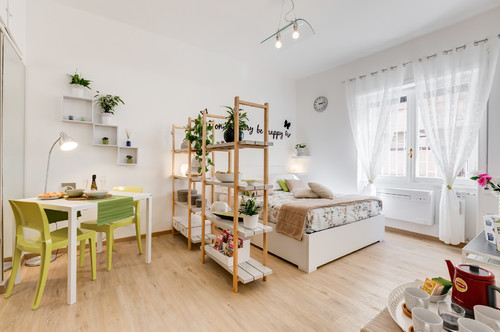
Instead, consider physical dividers to establish a dedicated workspace within your small home office.

If space allows, you can zone the room using furniture—like a tall bookcase or open shelving unit that doubles as storage and a visual barrier.
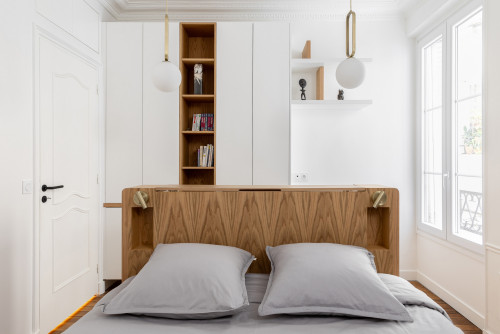
Another smart approach is to orient your home office design so that your background is a styled wall with art, home office decor, or neatly arranged shelves, creating a more polished, authentic presence on video calls.
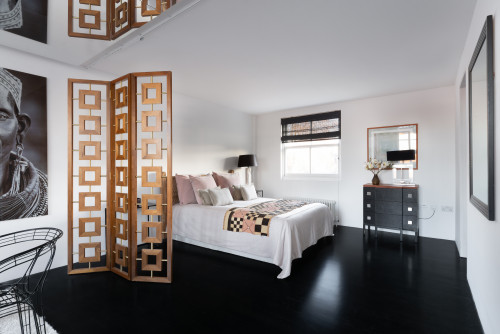
If permanent dividers aren’t an option, a foldable screen or a simple ceiling-mounted curtain can do the job.
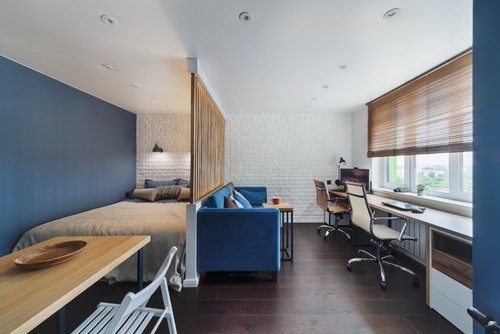
These affordable solutions offer privacy and help signal the shift between work and rest, making your cozy home office feel intentional, even in a shared space.
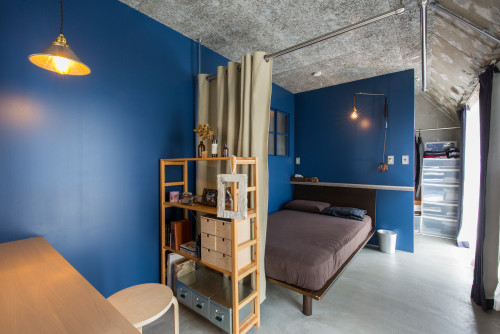
#4: Color & Style
Since we’re designing a home office in a bedroom, it’s important to choose a color scheme and style that feels cohesive and supports both rest and productivity.
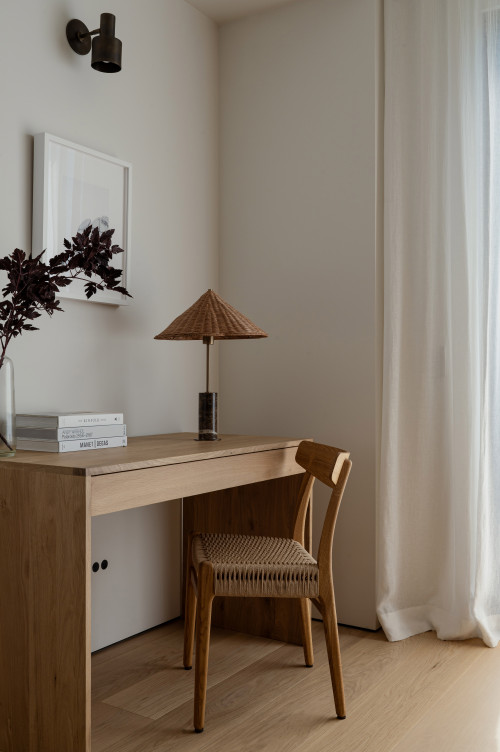
A well-balanced home office design starts with a palette that feels calm and intentional.

I recommend sticking to a neutral base to keep the space feeling open and uncluttered, especially in a small home office.
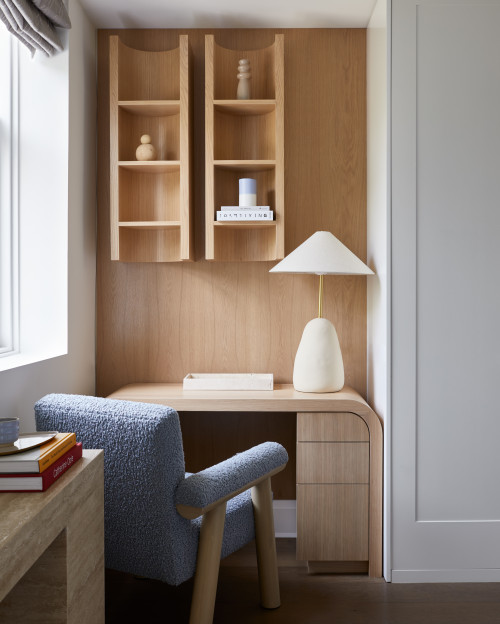
A monochrome scheme with tone variations can help subtly define the sleep and work zones without overwhelming the room.

If you’d like to add color, soft pastels or muted earthy tones work beautifully and can be repeated across textiles, paint, and home office decor for a harmonious look.

Color affects everything—from your focus levels to your ability to unwind.
So, choosing between warm and cool tones should also depend on the room’s orientation (north-facing rooms benefit from warm tones; south-facing rooms can handle cooler hues).

As for style, your personal taste matters most.
Some people thrive in a cozy home office with classic or mid-century modern aesthetics, while others prefer the clean simplicity of Japandi or Scandinavian styles.

The key is to create a home office setup that inspires you to work without disrupting the restful vibe of your bedroom.

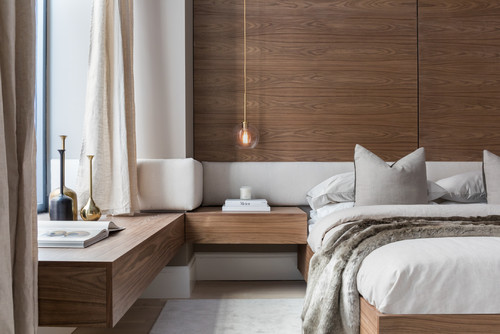





#5: Storage & Organization
We are combining two separate functions in one room, so don’t forget that storage organization is important here!
Depending on the space available, you might want to consider dual-function furniture: your nightstand can be a file cabinet, or your desk can double as a vanity.
Don’t forget that you’ll be sleeping here too, so hidden or closed storage helps maintain calm!
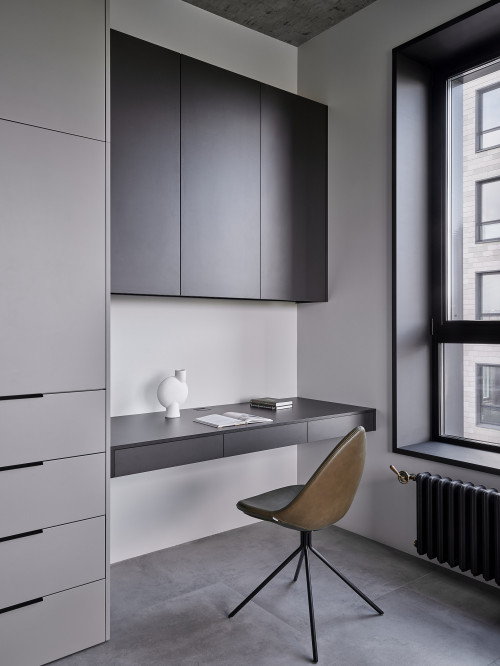
Don’t forget about wires, printers, and hard drives; plan where they’ll go without creating chaos. A great way to deal with this is to hide those items behind cabinet doors.

Honestly, you might not need to keep everything accessible all the time. Keep what you use daily within arm’s reach, the rest can be stored and organized away from sight.

If you are short on floor space, consider using vertical space: floating shelves, tall bookshelves, wall-mounted file organizers.
You can always add a storage bench or ottoman and if you ask me, closed storage, like cabinets or bins with lids are better at keeping the space calm.

One of my favorite practical items is a rolling cart that can act as a mobile filing cabinet or craft station.
#6: Lighting Design
My personal preference is to have access to the daylight while working – either facing it or having it come from the right side.
However, this is only a good idea if there are no direct sunlight beams hitting my laptop screen or eyes.

Even if the working desk is not adjacent to a window, usually, there is enough ambient light in the room to keep you going.
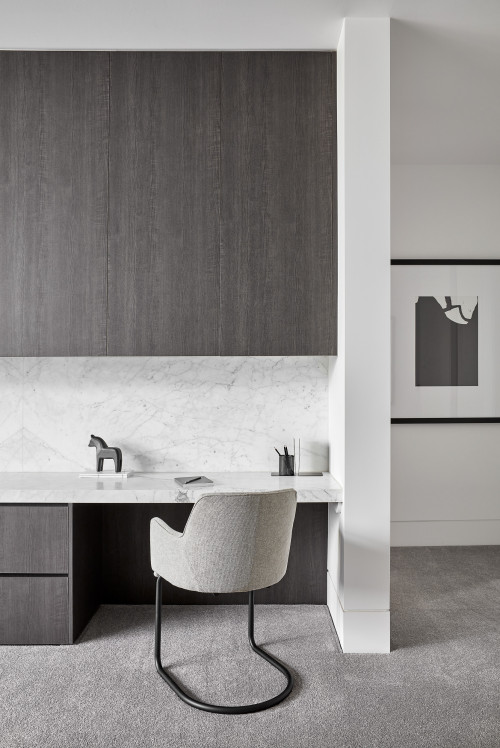
Yet, it’s a good idea to design the artificial lighting.
You can go for clip-on desk lamps or LED light strips for a minimal look.

Alternatively, you can also buy a table lamp.
I prefer eye-caring Desk Lights with adjustable dimming options.
#7: Décor & Styling Ideas
Since we are already combining two separate functions in one space, I would not clutter it with decor.
Keeping it simple also means you will have less dust to clean from tiny, tricky stuff. less dust = less allergies. at least for me.

I would suggest keeping the functional elements as decor elements: think of matching sconces and floating nightstands – you anyway need them!
This image below – it’s already a bit too much, in my opinion. But again, the clutter tolerance is very individual!
Another option is to design a mini-gallery wall: it’s nice, and you don’t have to clean much dust off of it.
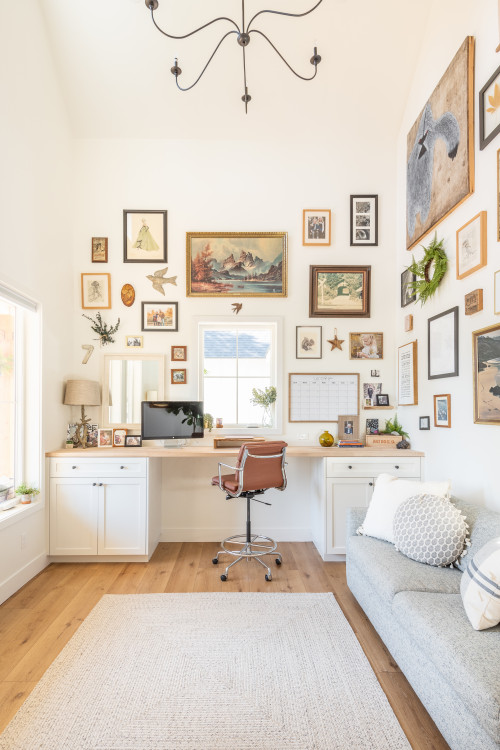
Another option is to use the wallpaper as part of the decor. You have to trust me on this – wallpaper CAN BE a piece of artwork!
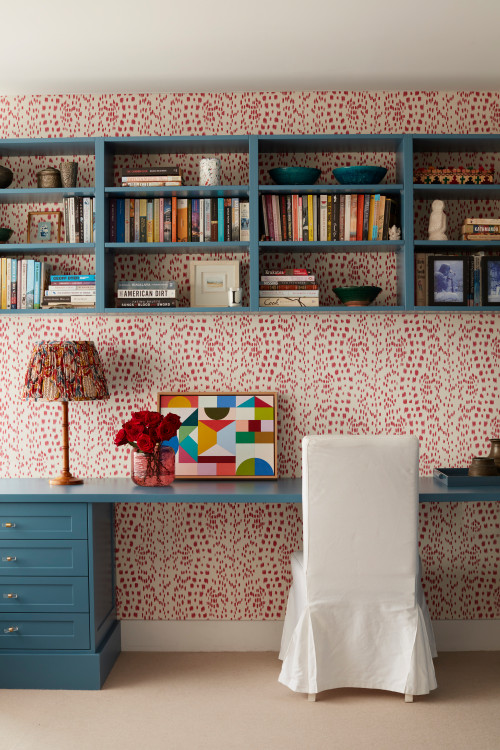
#8: Cable management
A work desk is all fun and cute until you realize you have cables to hide.
Don’t worry – there are options to hide cables even with the standing desk!
You just need two things: cable management channels to hold bundles of cables and cable clips to precisely control stray cables.
You can opt for a wall-mounted monitor instead of a standing one to free up more desk space.

Conclusion
Designing a home office spare bedroom combo is less about square footage and more about smart decisions.
When the layout works, the furniture pulls double-duty, and storage is thoughtfully planned, even the smallest space can deliver on function and comfort.
With a clear plan for storage, intentional lighting, and a calm color palette, you can create a space that supports both deep focus and good sleep.
The ideas shared here prove that small home office solutions don’t have to feel like compromises—they just need clarity and care.


